Abstract
To evaluate the potential for mycotoxin production by molds in dried beans, the mold flora of 114 samples was determined both before and after surface disinfection of the beans with 5% NaOCl. Surface disinfection substantially reduced mold incidence, indicating that contamination was mainly on the surface. The flora, both before and after disinfection, was dominated by species of the Aspergillus glaucus group, the toxicogenic species A. ochraceus, Penicillium cyclopium, and P. viridicatum, and species of Alternaria, Cladosporium, and Fusarium. The toxicogenic species Aspergillus flavis, A. versicolor, Penicillium citrinum, P. expansum, P. islandicum, and P. urticae were encountered less frequently. Of 209 species of Aspergillus and Penicillium screened for mycotoxin production on sterile rice substrate, 114 produced one or more of the following mycotoxins: A. flavus, aflatoxins; A. ochraceus, ochratoxins; A. nidulans, A. unguis, and A. versicolor, sterigmatocystin; P. cyclopium, penicillic acid; P. citrinum and P. viridicatum, citrinin; P. urticae, patulin and griseofulvin. Sterigmatocystin production by A. unguis is reported for the first time.
Full text
PDF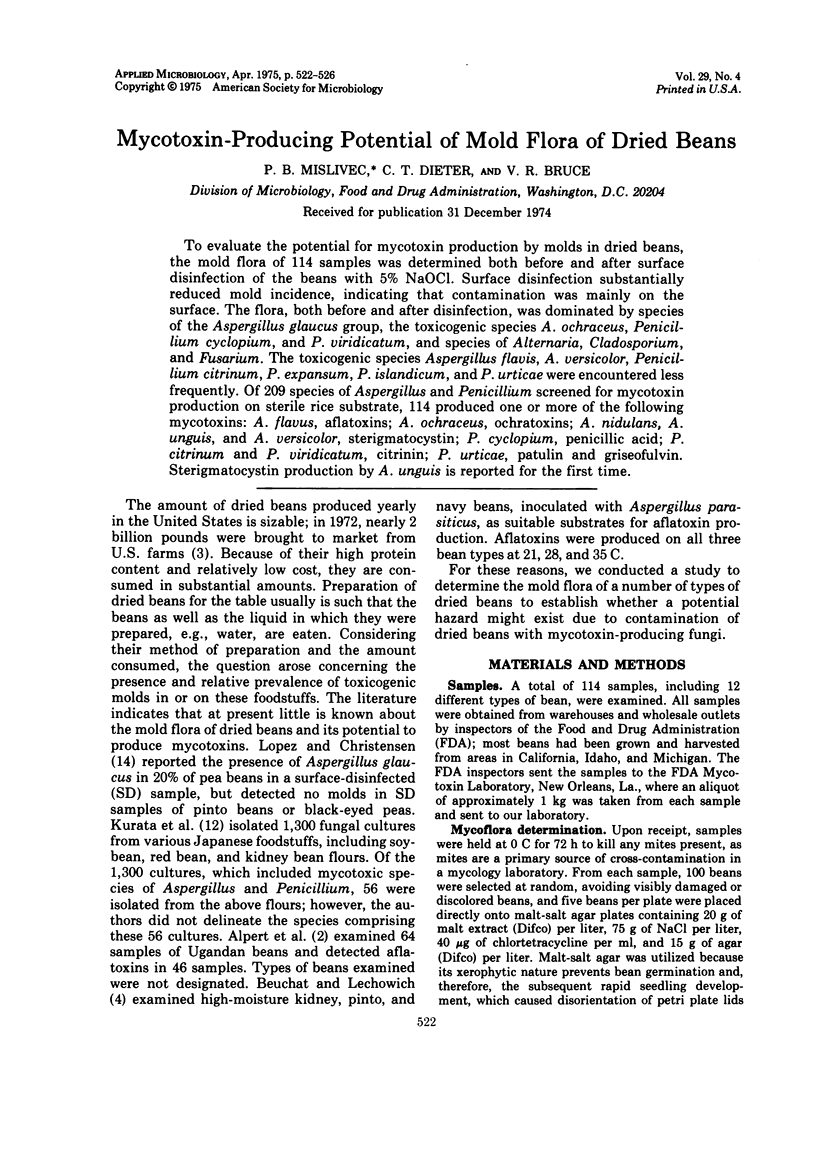
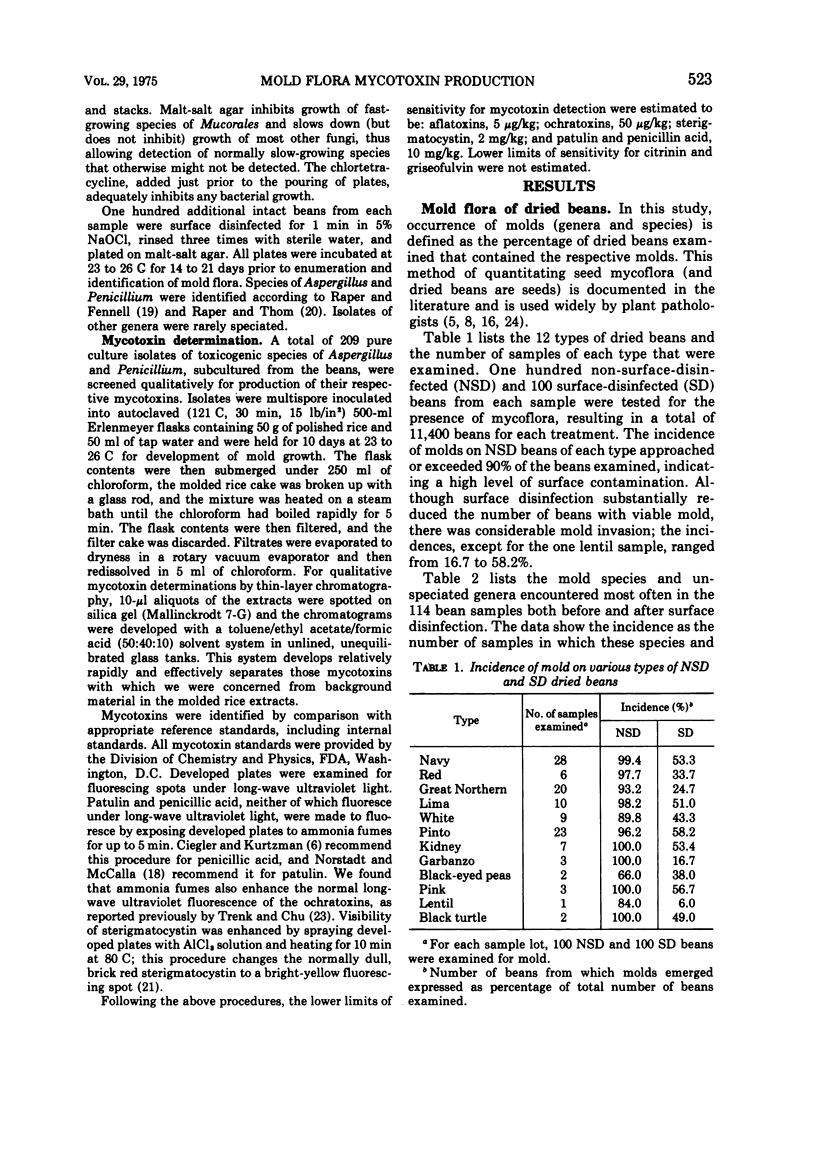
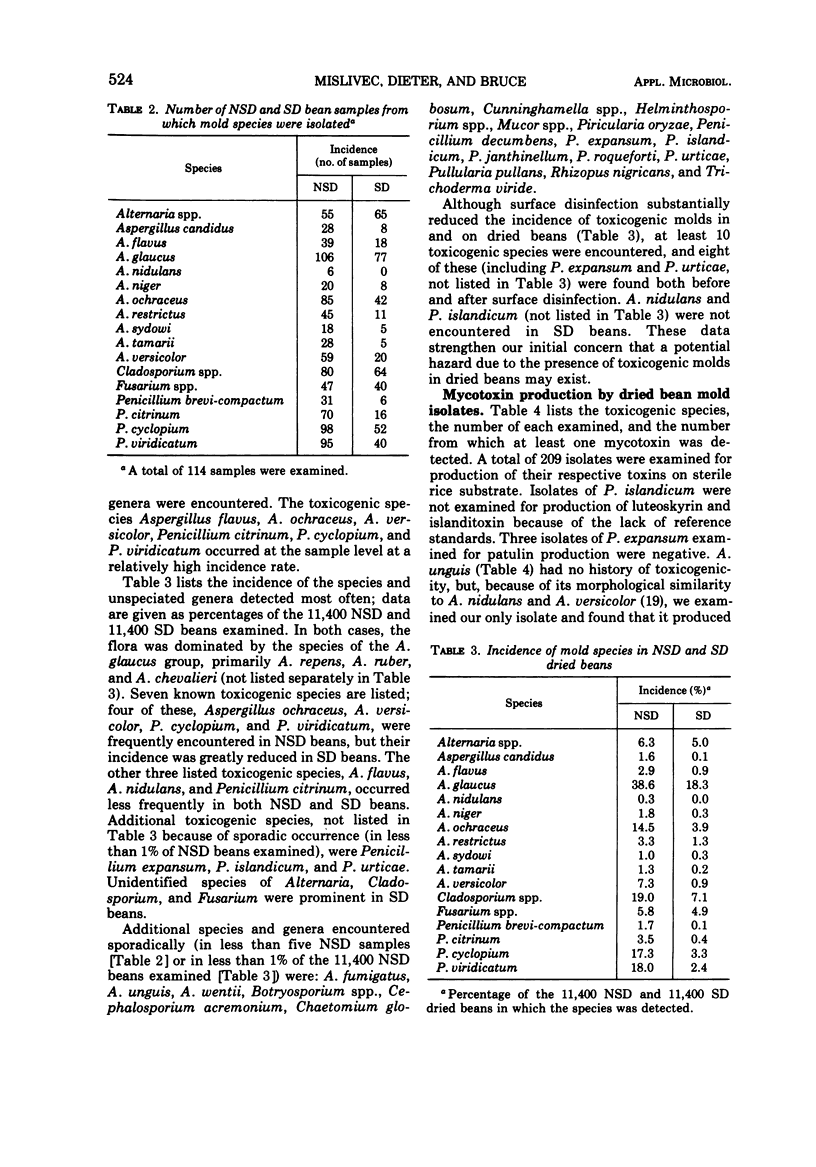
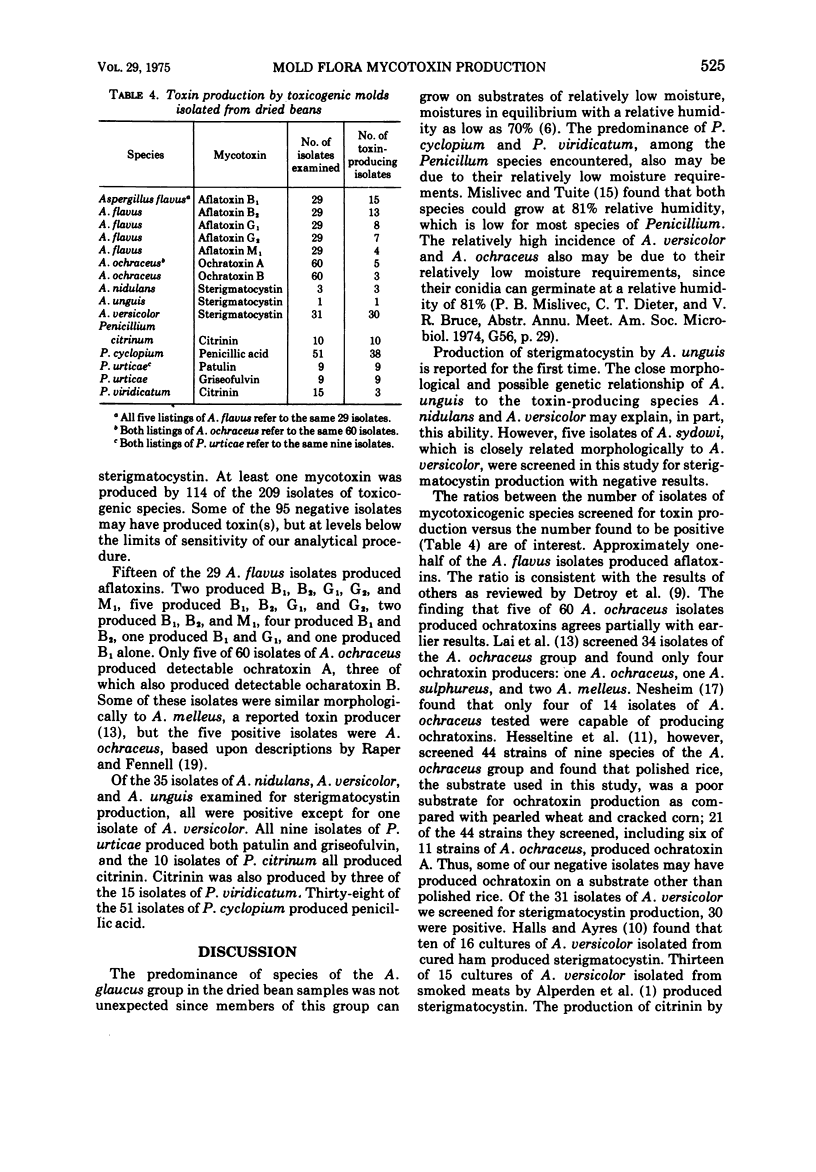
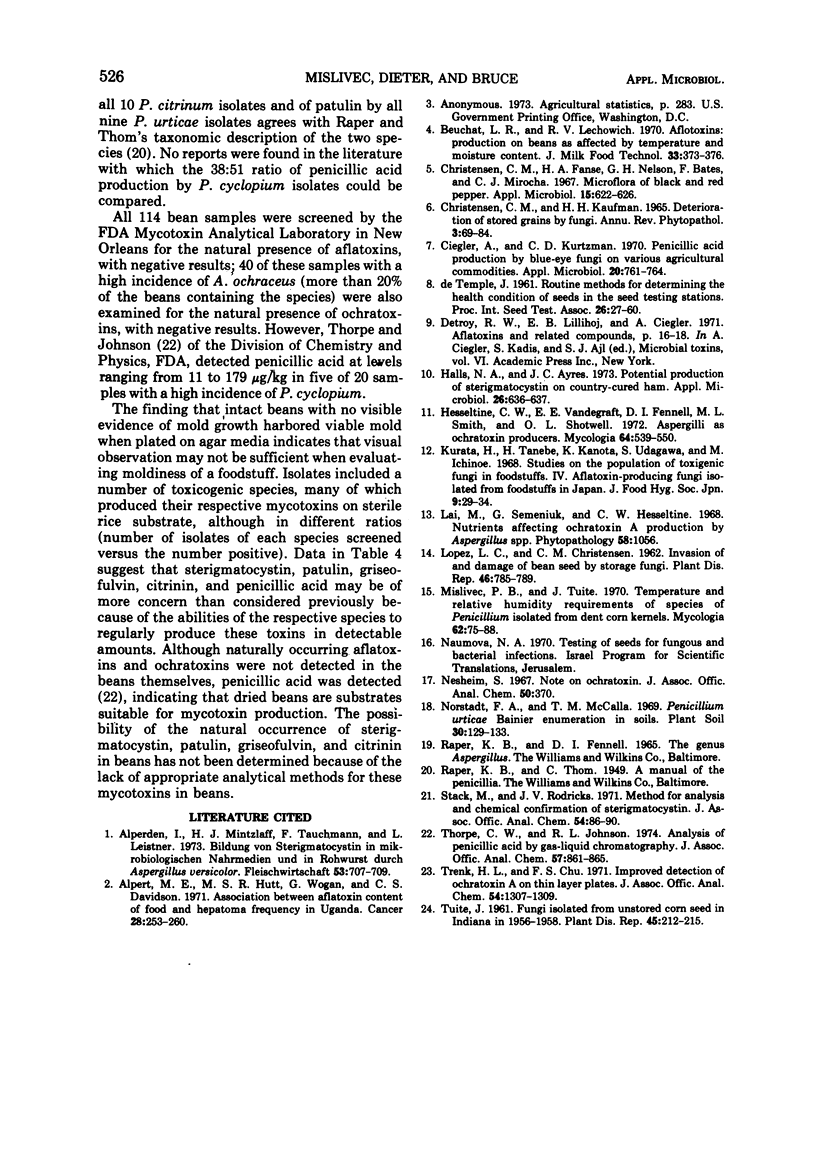
Selected References
These references are in PubMed. This may not be the complete list of references from this article.
- Alpert M. E., Hutt M. S., Wogan G. N., Davidson C. S. Association between aflatoxin content of food and hepatoma frequency in Uganda. Cancer. 1971 Jul;28(1):253–260. doi: 10.1002/1097-0142(197107)28:1<253::aid-cncr2820280151>3.0.co;2-g. [DOI] [PubMed] [Google Scholar]
- Christensen C. M., Fanse H. A., Nelson G. H., Bates F., Mirocha C. J. Microflora of black and red pepper. Appl Microbiol. 1967 May;15(3):622–626. doi: 10.1128/am.15.3.622-626.1967. [DOI] [PMC free article] [PubMed] [Google Scholar]
- Ciegler A., Kurtzman C. P. Penicillic acid production by blue-eye fungi on various agricultural commodities. Appl Microbiol. 1970 Nov;20(5):761–764. doi: 10.1128/am.20.5.761-764.1970. [DOI] [PMC free article] [PubMed] [Google Scholar]
- Halls N. A., Ayres J. C. Potential production of sterigmatocystin on country-cured ham. Appl Microbiol. 1973 Oct;26(4):636–637. doi: 10.1128/am.26.4.636-637.1973. [DOI] [PMC free article] [PubMed] [Google Scholar]
- Hesseltine C. W., Vandegraft E. E., Fennell D. I., Smith M. L., Shotwell O. L. Aspergilli as ochratoxin producers. Mycologia. 1972 May-Jun;64(3):539–550. [PubMed] [Google Scholar]
- Mislivec P. B., Tuite J. Temperature and relative humidity requirements of species of Penicillium isolated from yellow dent corn kernels. Mycologia. 1970 Jan-Feb;62(1):75–88. [PubMed] [Google Scholar]
- Stack M., Rodricks J. V. Method for analysis and chemical confirmation of sterigmatocystin. J Assoc Off Anal Chem. 1971 Jan;54(1):86–90. [PubMed] [Google Scholar]
- Thorpe C. W., Johnson R. L. Analysis of penicillic acid by gas-liquid chromatography. J Assoc Off Anal Chem. 1974 Jul;57(4):861–865. [PubMed] [Google Scholar]
- Trenk H. L., Chu F. S. Improved detection of ochratoxin A on thin layer plates. J Assoc Off Anal Chem. 1971 Nov;54(6):1307–1309. [PubMed] [Google Scholar]


